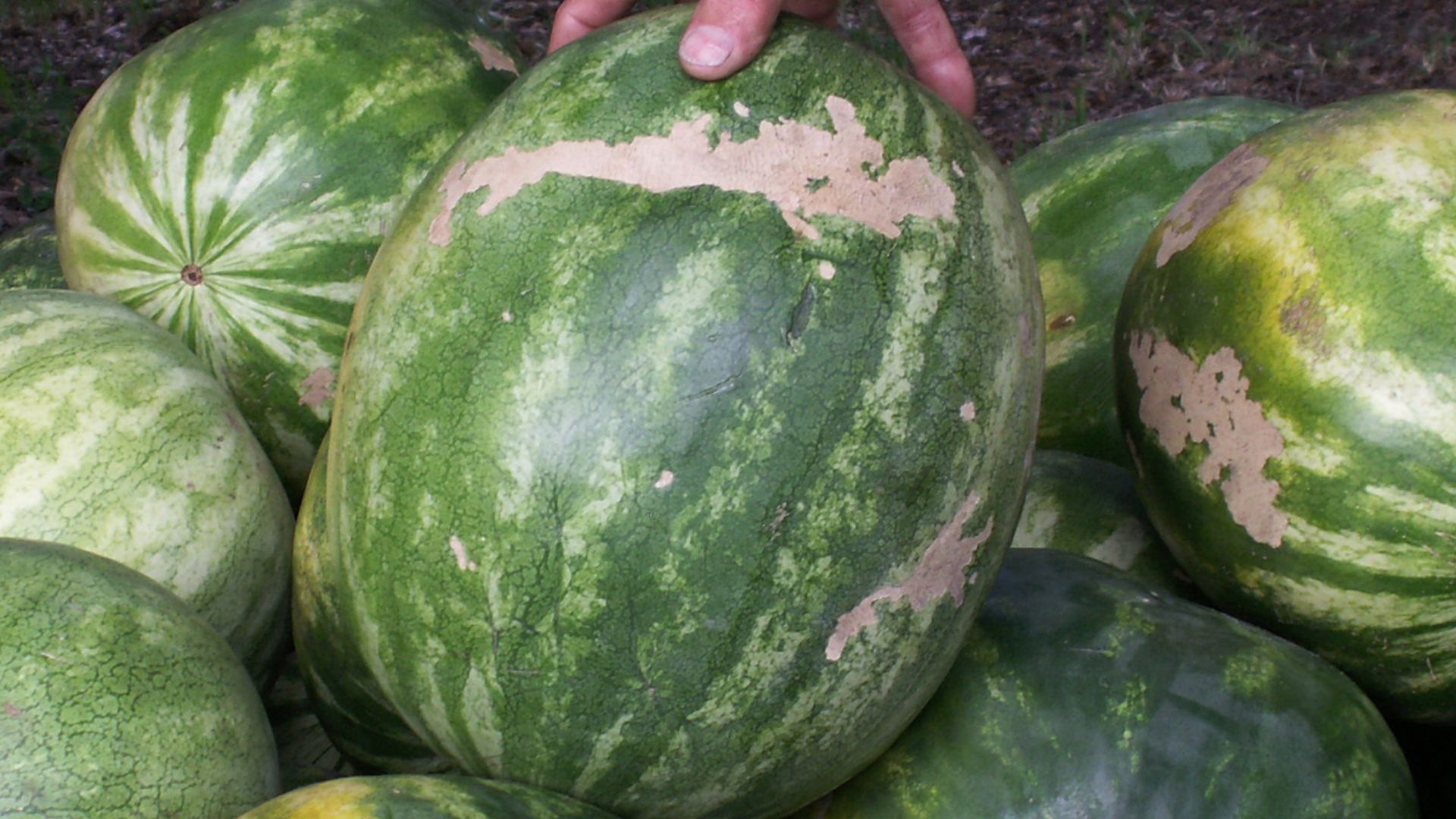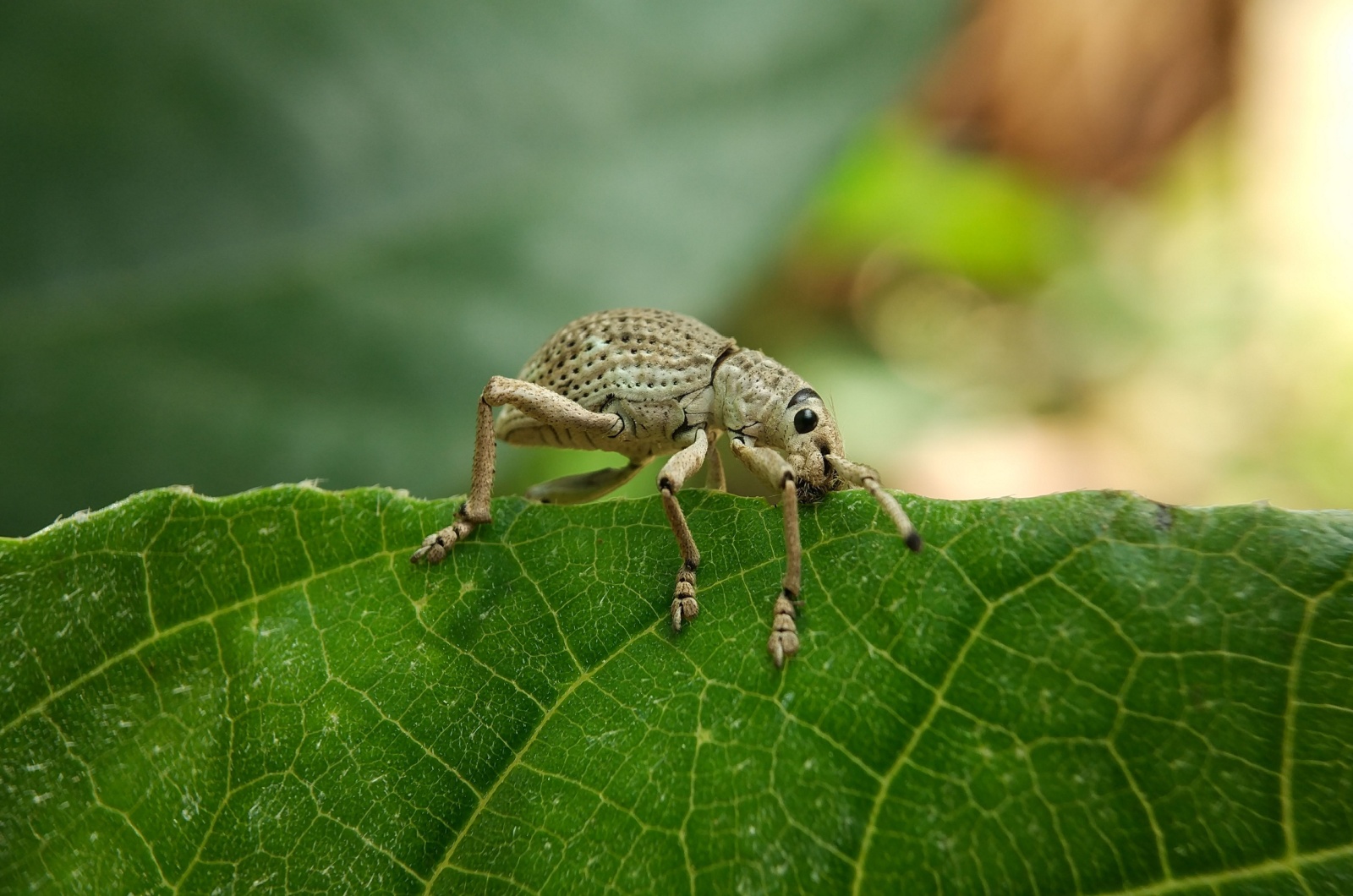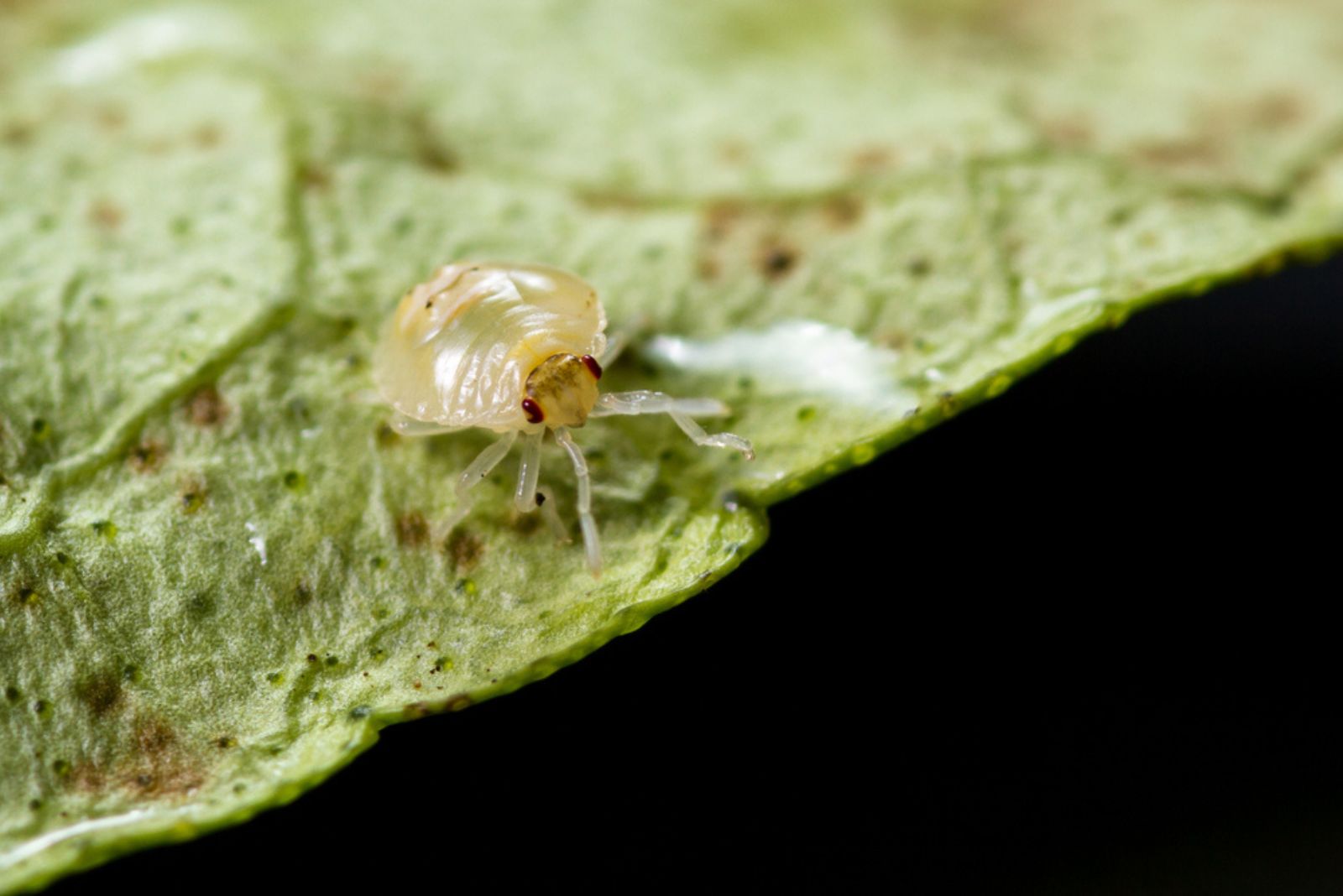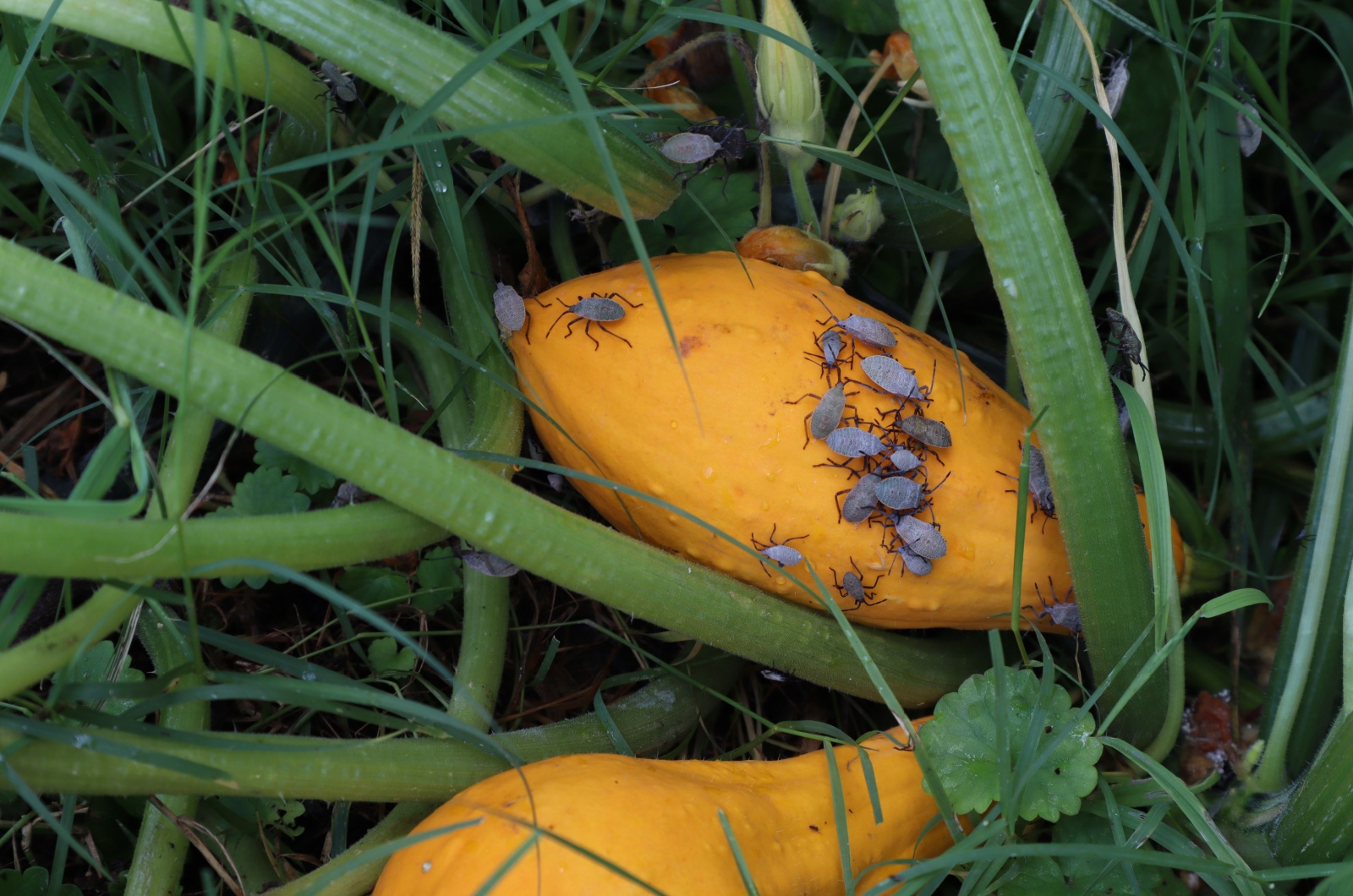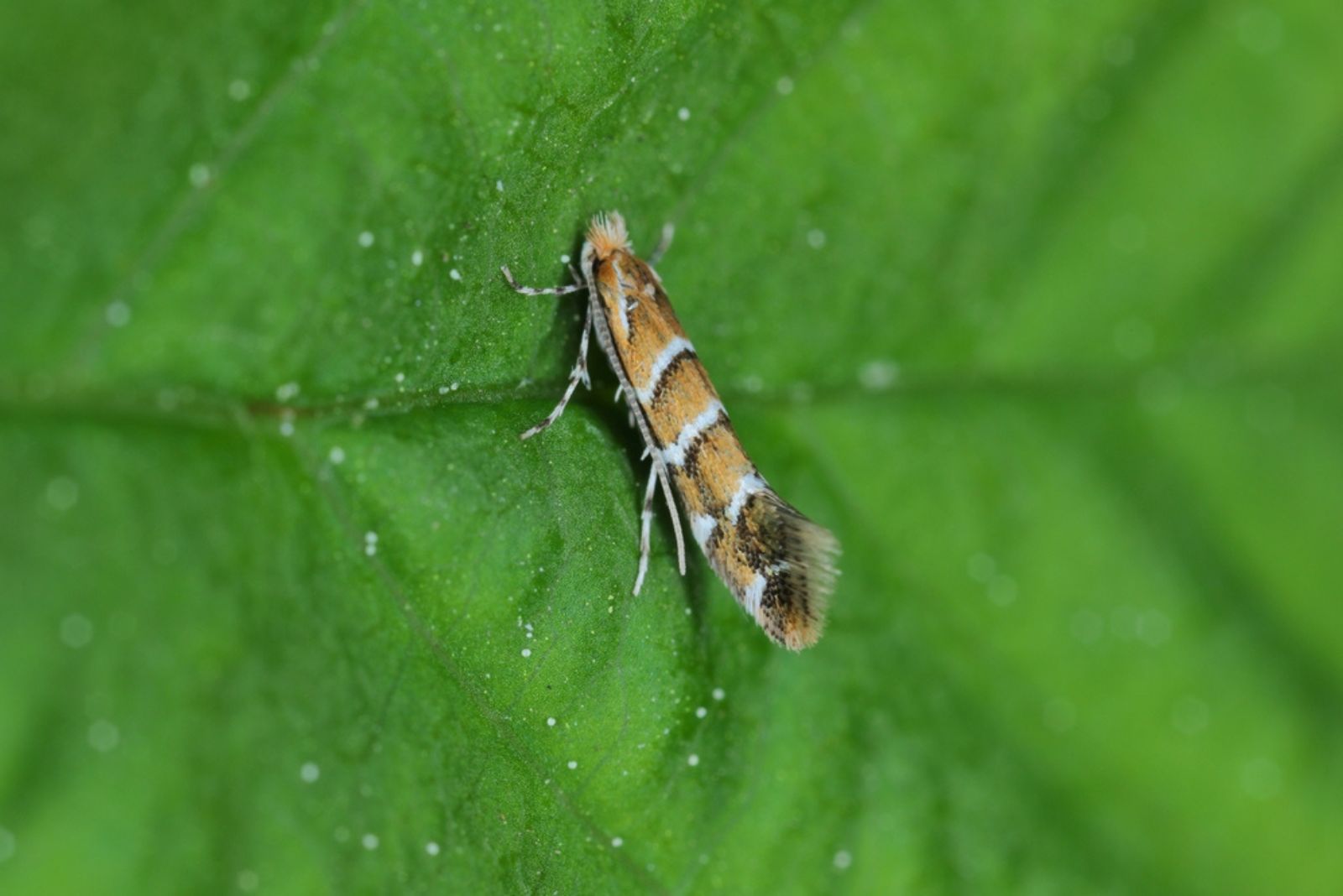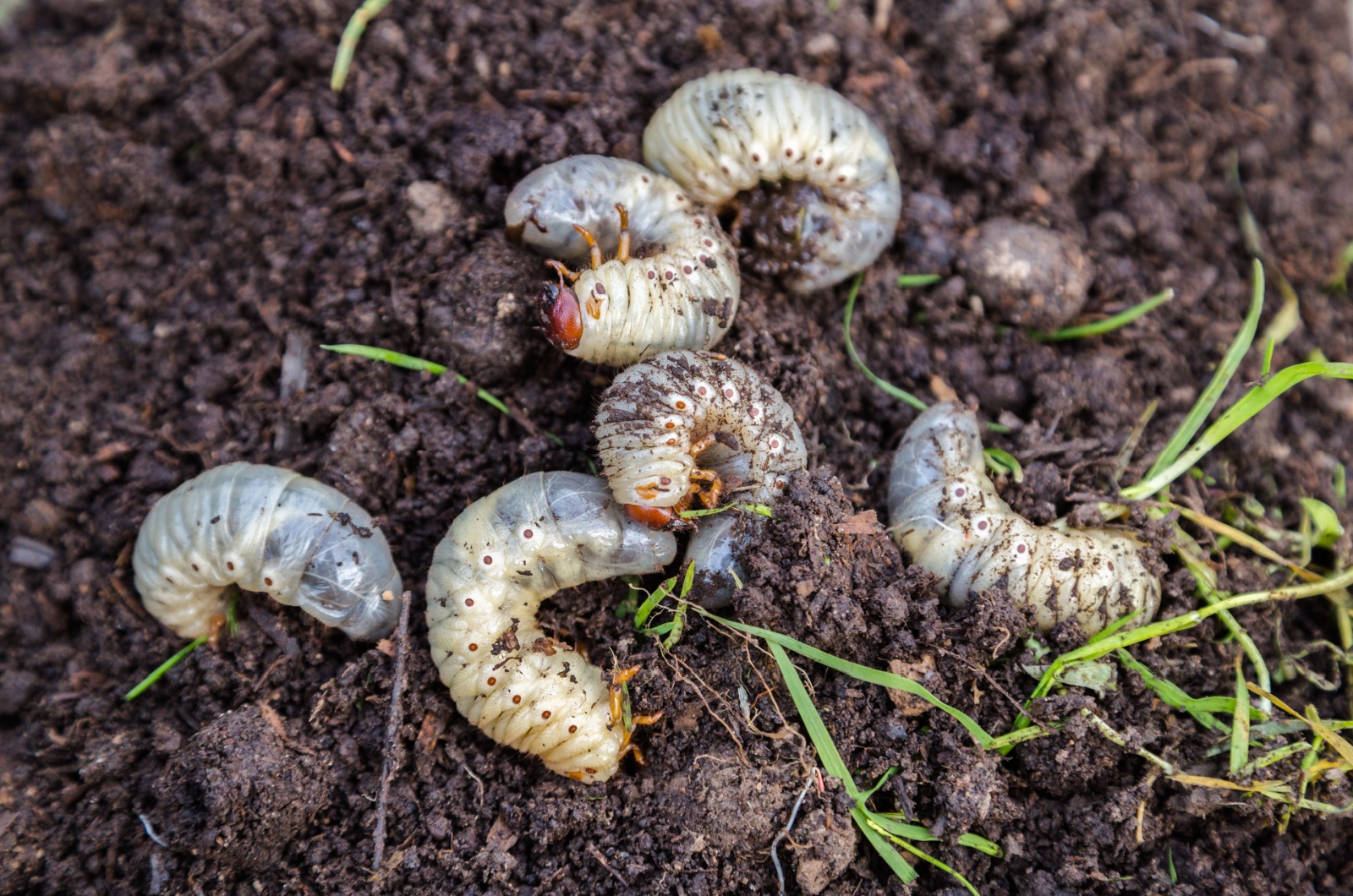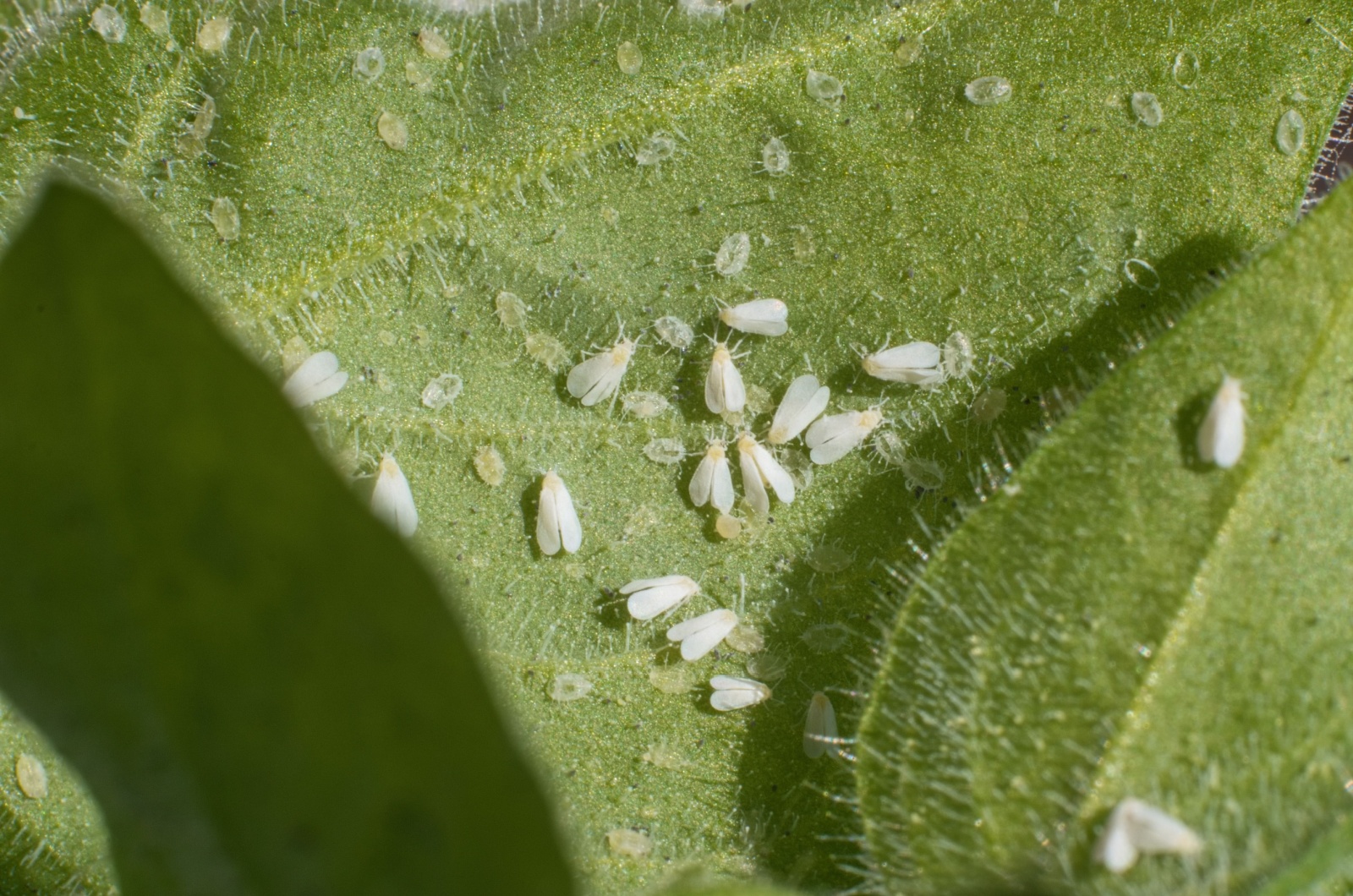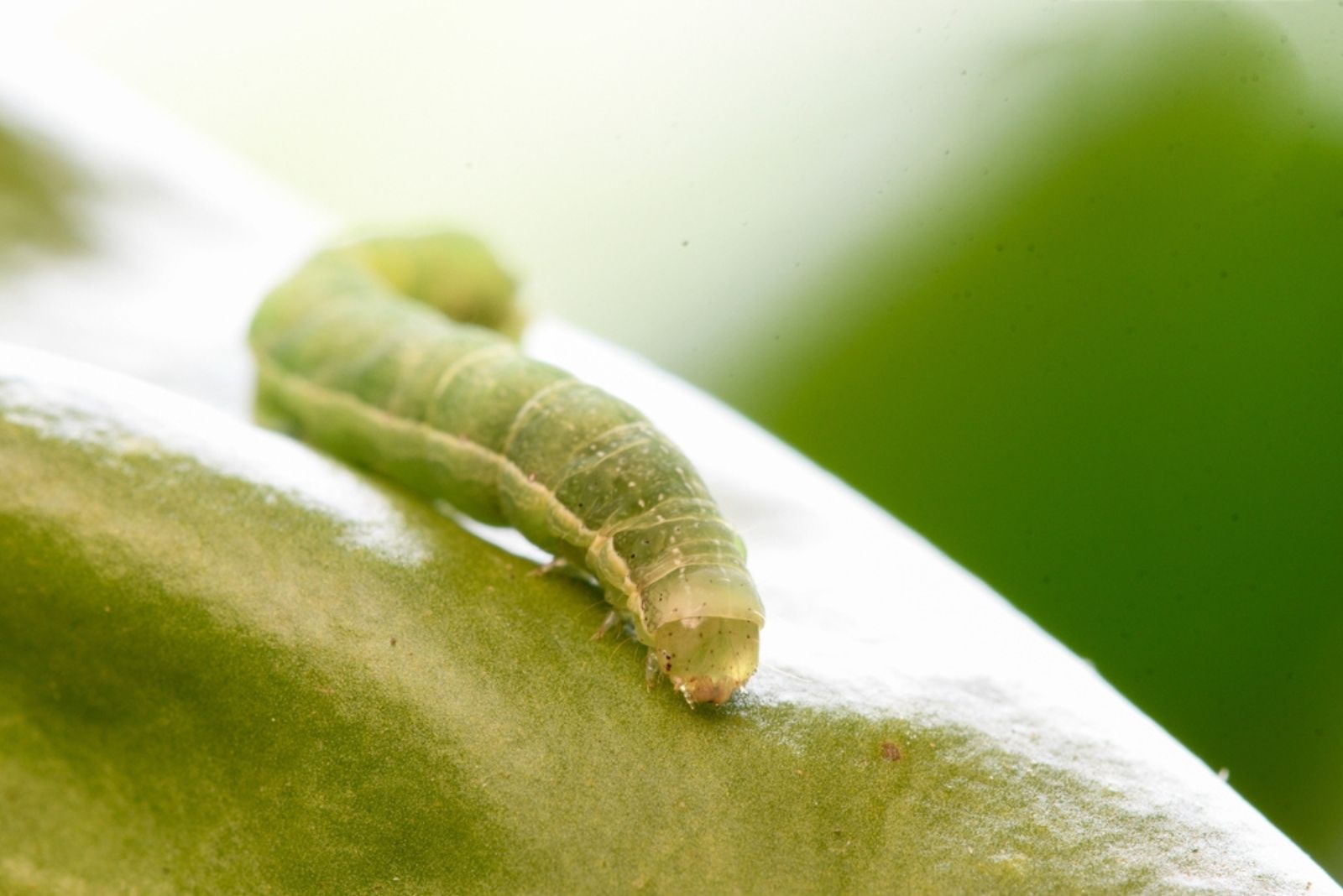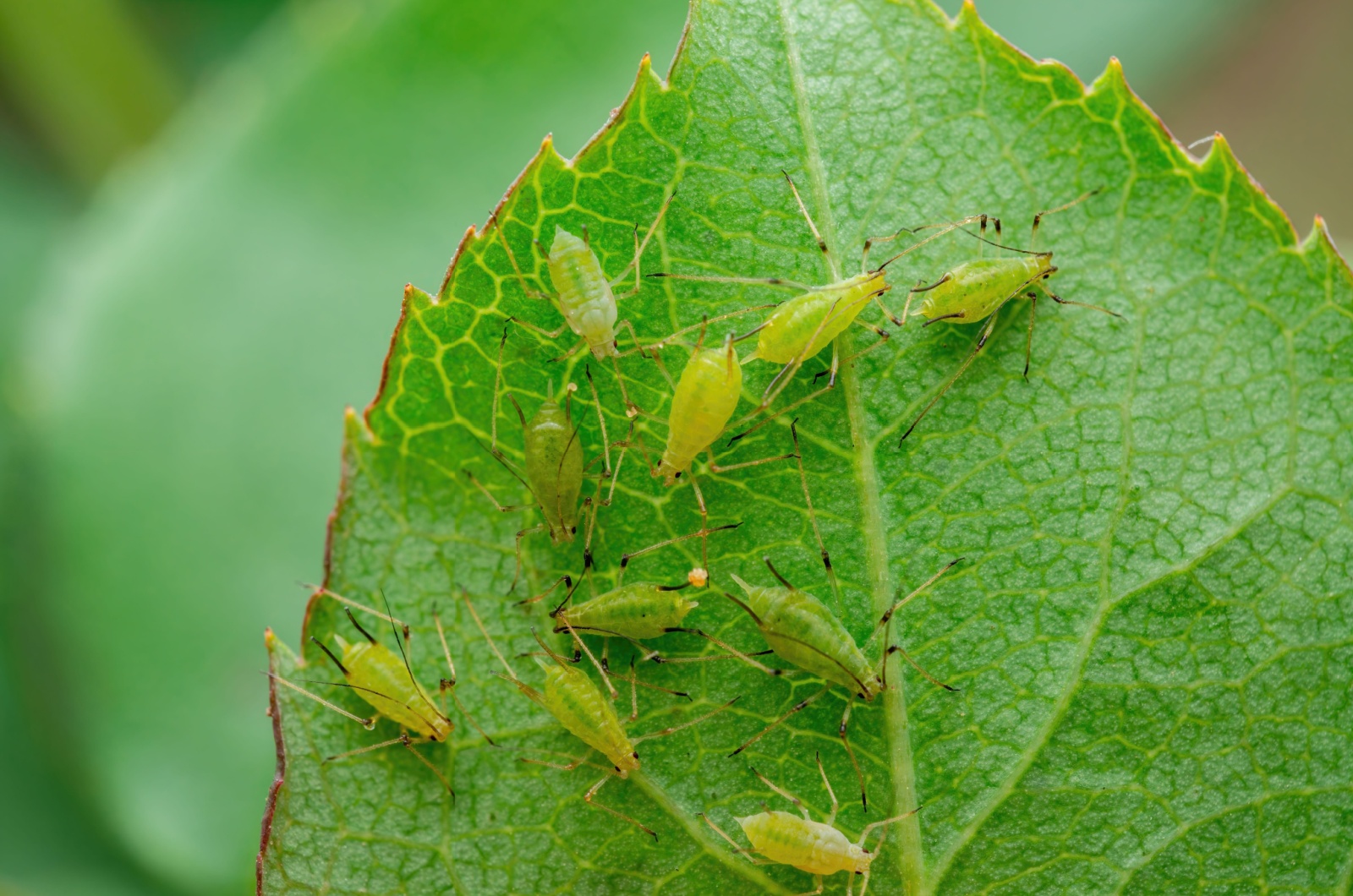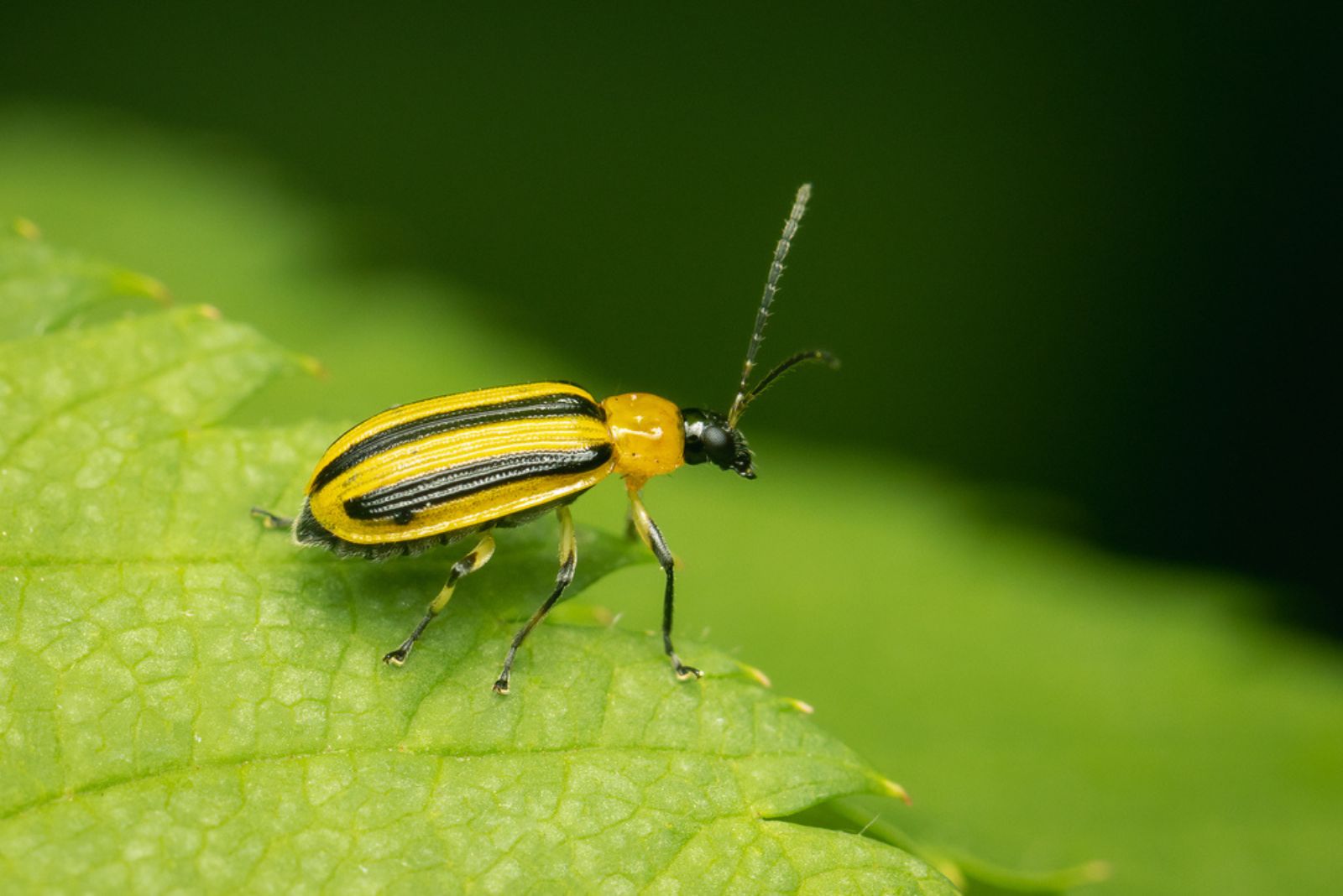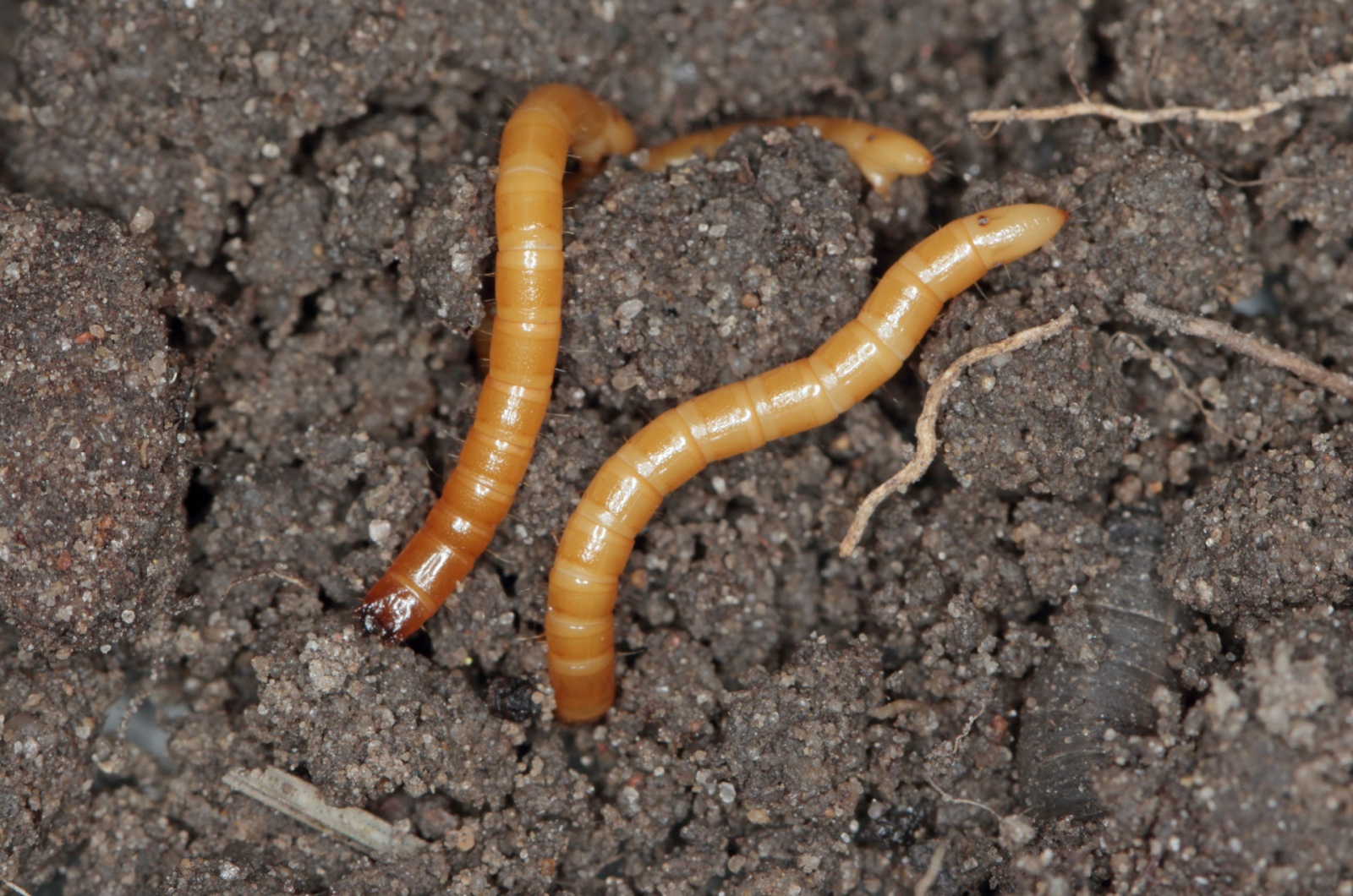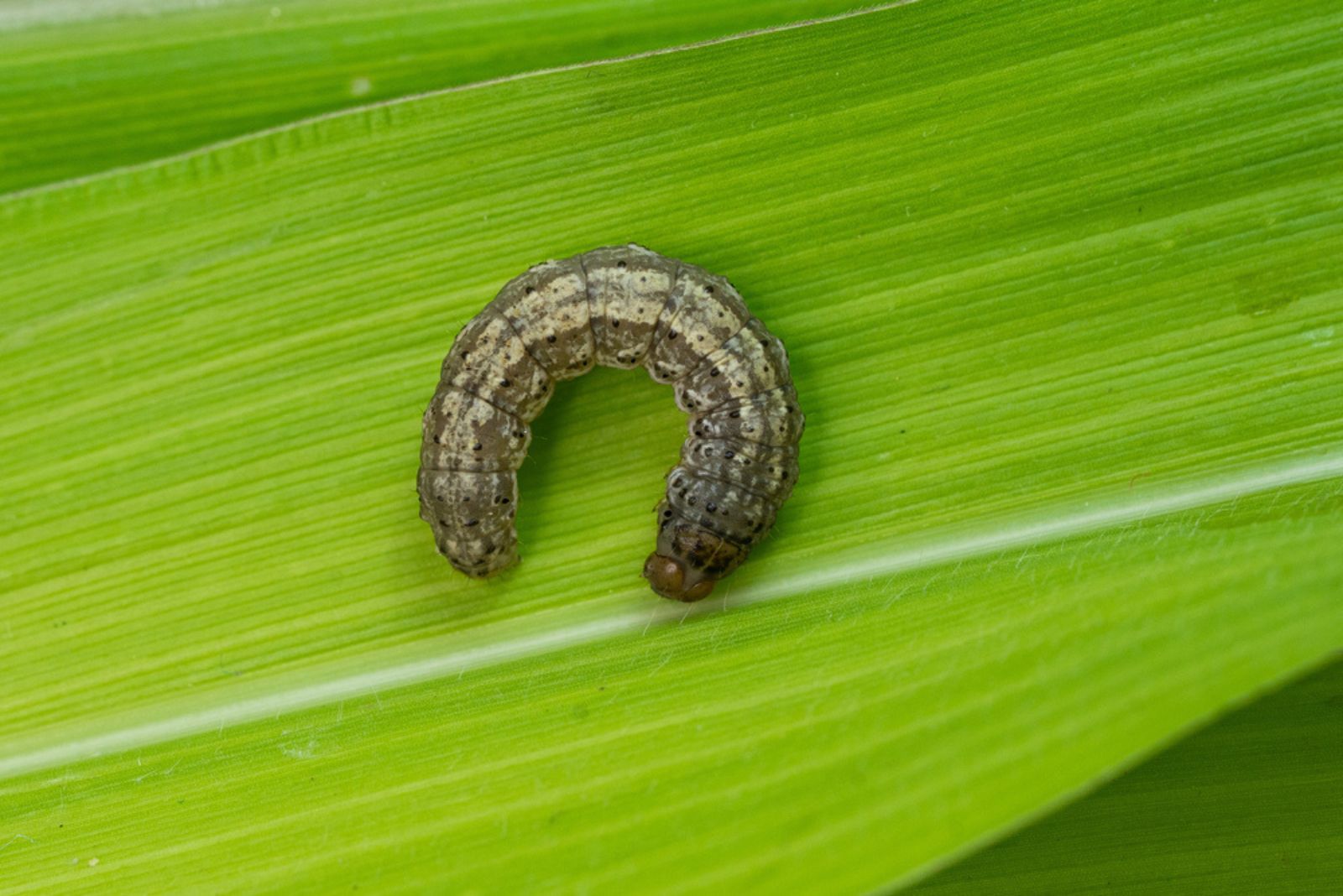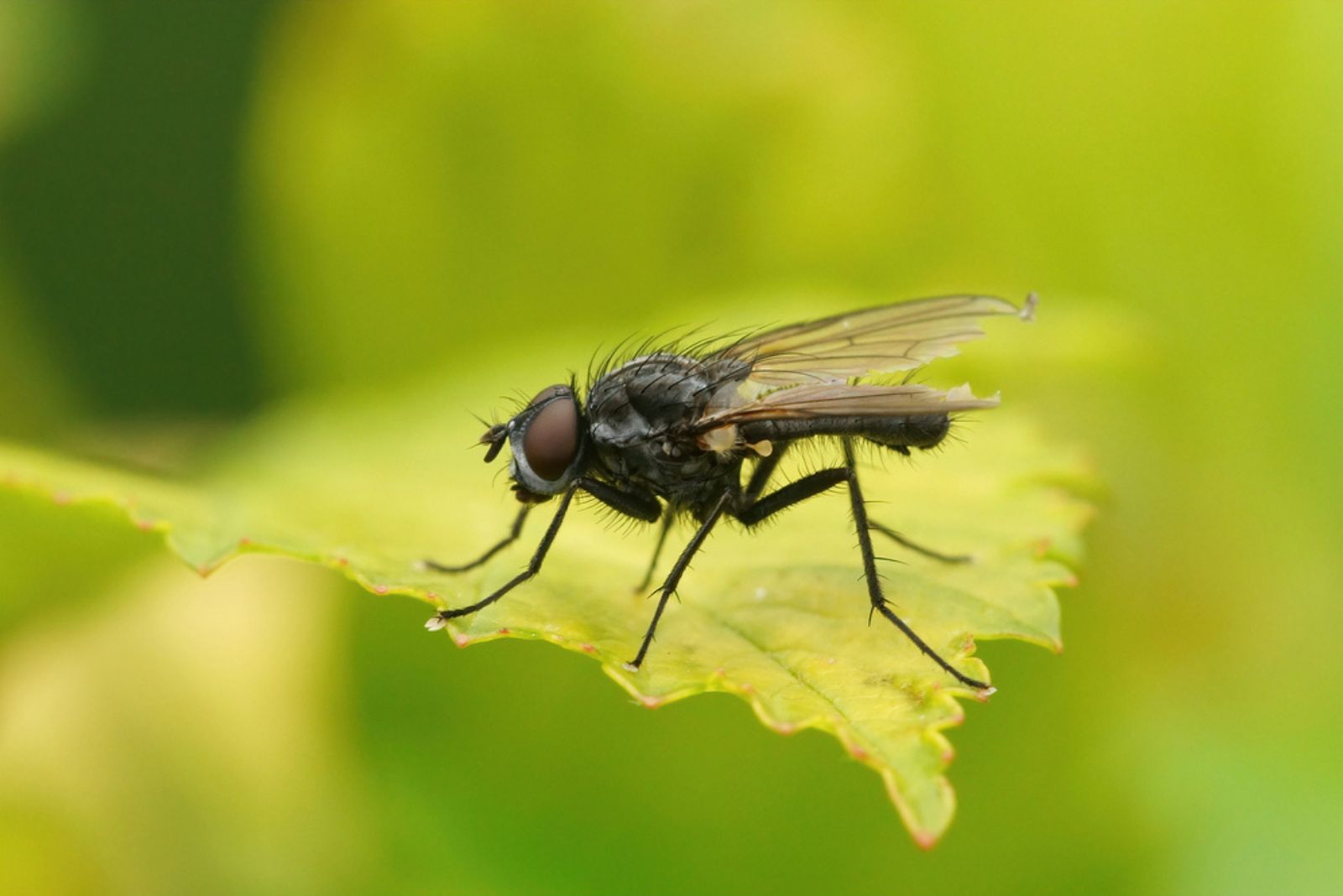Watermelons looking less than perfect? Wondering what’s causing the problem? I’ve been there too!
I started growing watermelons a couple of years ago, and last year they just started wilting out of nowhere. I was wondering what the issue could be when I found out about watermelon pests. They can be really nasty and spread all over them, ruining your precious melons.
After learning about these pests, how to spot them, and how to prevent them, I’ve had a great watermelon season. Here’s what you need to watch out for:
1. Whitefringed Beetles
Whitefringed beetles and their C-shaped larvae can wreak havoc on your cute little watermelons. The adult beetles munch on leaves and fruits, leaving behind ugly scars that can lead to rotting.
And if that’s not bad enough, their larvae can completely ruin roots and stems without you even noticing. They wipe out seedlings in no time and give even mature plants a rough time.
Identify them by the white stripes on their gray-brown bodies and notched leaf damage.
Remove them with diatomaceous earth, clove oil, and good garden hygiene.
Prevent further damage by rotating crops and checking for grubs before planting.
More watermelon-related topics: Male And Female Watermelon: Differences and Features
2. Spider Mites
A few spider mites might not ruin your crop, but if they spread, your melons could be in trouble.
These tiny pests suck the nutrients right out of the leaves and mess with photosynthesis. Plus, they reproduce like crazy, so a small problem can quickly become a big headache (trust me, I’m still recovering).
Identify them by fine webbing and stippled leaves.
Remove them with insecticidal soap, garlic extract, water sprays, and horticultural oils.
Prevent further damage by supporting beneficial insects, avoiding insecticides, and keeping plants well-watered and fertilized.
Having issues with spider mites indoors? Click here: This Simple Ingredient Will Keep Spider Mites Off Your Houseplants
3. Squash Bugs
Squash bugs used to be a nightmare for just squash and pumpkins, but lately they’ve started lurking on watermelons, too.
They like to snack on leaves and fruits, which ultimately leads to poor-quality melons and even loss of fruit. They also spread a nasty bacterial disease called cucurbit yellow vine disease (poor plants!).
Even though young plants are especially vulnerable, mature vines still aren’t safe. They show up in spring when temperatures rise, so be on a lookout!
Identify them by their small, shiny brown eggs, pale gray nymphs with black legs, and solitary dark adult bugs.
Remove them with diatomaceous earth, handpicking, neem oil, and insecticidal soap
Prevent further damage by using trap crops, planting nectar-rich flowers, or growing nasturtiums to repel them.
4. Leafminers
If you’ve been gardening for quite some time now, then you’ve definitely heard of leafminers because most gardeners encounter them at some point.
The adult females lay eggs on leaves, and once the larvae hatch, they tunnel through the leaves, munching on the soft tissues.
Not only do they leave yucky trails on the plant, but they also interfere with photosynthesis, which makes leaves even MORE prone to sunburn.
This damage can lead to lower yields and, in severe cases, even kill the plant. So, don’t take leafminers lightly!
Identify them by the tunneling patterns with squiggly lines on leaves, leaf curling, and distortion.
Remove them with your hands and remove damaged leaves.
Prevent further damage by rotating crops, reducing weeds, and encouraging natural predators.
5. White Grubs
In late July and August, white grubs become active in the soil (looking for firm roots to munch on).
They’re particularly fond of sunny spots and can cause a lot of damage before you even realize they’re there. As the season progresses, you might also see birds and other wildlife digging up your garden in search of these tasty treats (yuck).
Identify them by the small, white larvae with reddish heads that are curled into a C shape.
Remove them with milky spore treatment in the fall.
Prevent further damage by applying beneficial nematodes in spring, using deep and infrequent watering, and avoiding consistently moist soil.
Related: How To Treat Grubs Organically
6. Thrips
And, of course, thrips are on the list. These tiny, flying insects can really wreak havoc by feeding on flowers, which prevents fruit from developing properly. They’re also known for spreading diseases like necrotic spot virus and tomato spotted wilt virus.
While adults munch on buds, leaves, flowers, and fruit, leaving behind scars and stunted growth, they don’t usually ruin the entire harvest. The real issue is the diseases they can spread, which can be quite serious.
Identify them by their tiny wings on yellow, brown, black, or white bodies, about the size of a grain of rice (use magnifying glass to spot them).
Remove them with neem oil and regular pruning.
Prevent further damage by attracting predatory insects like lacewings and wasps with nectar-rich plants, and keeping your plants well watered and fertilized.
More watermelon-related topics: This Genius Watermelon Hack Is All You Need To Attract More Pollinators To Your Yard
7. Whiteflies
Whiteflies are the worst kind I had to deal with. Wondering why?
It’s because they carry viruses that can stunt your melon’s growth and cause nutrient deficiencies. And if that’s not bad enough, they can even lower the sugar content in your melons (definitely not something any watermelon grower wants to see).
Identify them by the small white flying pests that flutter into the air when you shake the vine, or hard-to-see bugs on the undersides of leaves.
Remove them with repeated neem oil applications and insecticidal soap.
Prevent further damage by using seaweed spray to deter them and keeping plants healthy while attracting natural predators.
8. Beet Armyworms
If you think that beet armyworms only attack beets, think again. They definitely attack all sorts of plants in the garden, regardless of their name.
Of course, these pests have a taste for watermelons too. They target young fruits and leaves, causing horrible damage and even defoliation.
Though they mostly cause surface damage to immature fruits, those holes invite decay-causing organisms, which can lead to rotten melons. A large beet armyworm infestation (a true tiny army) can completely ruin watermelons.
Identify them by their small, bright green larvae just over an inch long with black spots behind their heads.
Remove them with bacillus thuringiensis, 5% cottonseed foliar spray, neem oil, or hand picking them into soapy water.
Prevent further damage by attracting natural predators like birds to the garden to keep beet armyworms in check.
More watermelon-related topics: These Are The 7 Perfect Companion Plants For Watermelon That Will Make It Sweeter Than Ever Before
9. Aphids
Is there a gardener who doesn’t get the chills when hearing about aphids? These tiny terrors can absolutely mess up your garden fruits (and yes, they love watermelon too!).
Melon aphids can deform your vines and interfere with photosynthesis. They can also carry mosaic viruses that will further damage your crop. It feels like no matter how hard you try, these pests always find their way into the garden.
Identify them by their small green to brown bodies on stems, often found on the undersides of the leaves.
Remove them with horticultural oils, insecticidal soaps, neem oil, soapy water, or a strong stream of water.
Prevent further damage by using lacewings and ladybugs as natural predators and planting marigolds or garlic.
Related: This Simple Ingredient Can Protect Your Plants From Aphids
10. Cucumber Beetles
Cucumber beetles are the nemesis of watermelons and other cucurbits. Both adults and larvae munch on roots, vines, leaves, flowers, and fruit.
They can stunt growth and damage plants, but the real trouble is their bacteria, Erwinia tracheiphila, which causes bacterial wilt and can quickly kill your plants.
Identify them by the shiny half-inch long bodies with black and yellow stripes or spots, and long black antennae. Larvae are slender, whitish, with short legs and darker ends.
Remove them with traps, hand removal, insecticidal oil, or neem oil. Pyrethrin is effective but should be a last resort.
Prevent further damage by using mulch, reflective plastic and plants like nasturtium and marigolds to repel them.
11. Wireworms
Wireworms, or more precisely the larvae of click beetles, can be a real problem in the garden.
They can live up to five years in the soil and are hungry for roots, making them a threat to both young seedlings and mature plants. Though they don’t bother humans, their appetite for roots can seriously damage your watermelon plants.
Identify them by their reddish-brown bodies with a hard shell and clicking sounds as they flip over.
Remove them with potato traps (bury raw potato pieces on a stick and remove daily) and parasitic nematodes.
Prevent further damage by controlling weeds, maintaining good drainage, and rotating with less appealing crops like brassicas and onions.
More watermelon-related topics: Ready, Set, Harvest: These 3 Simple Tips Will Help You Check If Your Watermelons Are Fully Ripe
12. Cutworms
If you’re in the Southwestern U.S, then you must have heard about cutworms (because they’re literally everywhere in this region).
These quirky pests like to snack on leaf surfaces and stems, which ultimately leads to them killing young plants by cutting them down at the base. While they’re less of a threat to mature plants, they’re definitely a concern for seedlings.
Identify them by their mature larvae that are about two centimeters long, mottled brown and gray, and curl into a C shape when disturbed. They typically live in the soil and feed at night.
Remove them with diatomaceous earth, beneficial nematodes, and cornmeal (which they eat but cannot digest).
Prevent further damage by using diatomaceous earth in the soil. Till in spring to kill overwintering larvae, keep beds clear of weeds and debris, and cover melon vines with a cloche or critter cover to prevent moths from laying eggs.
13. Seedcorn Maggots
And lastly, we have seedcorn maggots (not so popular in the bug world).
Seedcorn maggots are the larvae of a small gray fly that lays eggs in decaying plant matter. After hatching, these maggots spend the winter in the soil and attack newly planted seeds in early spring.
While they can have multiple generations each year, they mainly cause trouble in the spring (so stay alert!).
Identify them by their small maggots in the soil that cause seedlings to wilt and die within days after sprouting.
Remove them with insecticidal soil drenches (not recommended due to harm to beneficial insects and soil health).
Prevent further damage by waiting to start seeds until soil warms to 80°F (27°C) or starting seeds indoors (opt for late-season planting for faster seedling growth).
More watermelon-related topics: What To Expect During The 9 Different Watermelon Growing Stages

